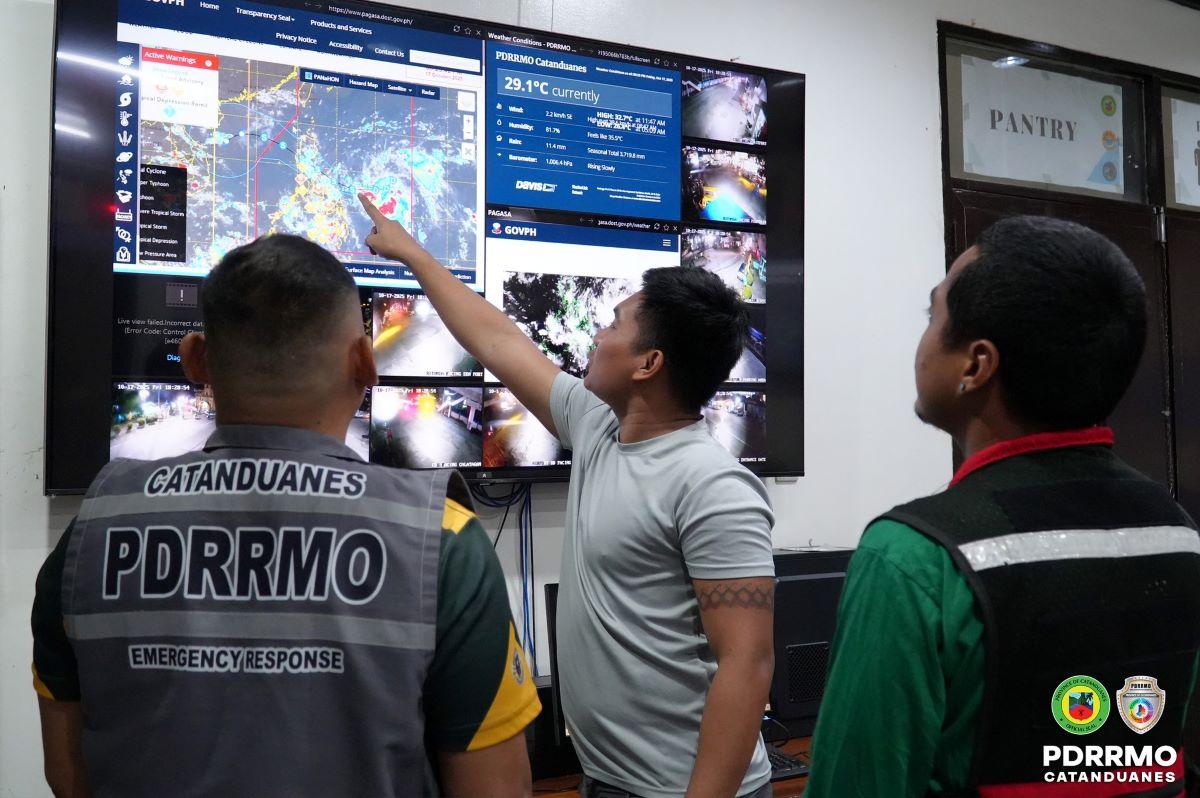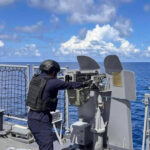Thousands of Catanduanes residents left their homes along the Pacific coast Saturday as weather experts warned of coastal flooding ahead of the approach of Tropical Storm Ramil (international name: Fengshen).
The eye of the storm was forecast to brush past Catanduanes, an impoverished island of 270,000 people, later in the day with gusts of up to 80 kilometers (50 miles) an hour.
Ramil will bring heavy rainfall, along with a “minimal to moderate risk” of coastal flooding from 1-2 meter (3-2 foot) waves being pushed ashore by the disturbance, the government weather service said.
More than 9,000 residents of Catanduanes moved to safer ground, the provincial disaster office said, in a well-rehearsed routine on the island that is often the first major landmass hit by cyclones that form in the western Pacific Ocean.
The Catanduanes provincial government ordered local officials to “activate their respective evacuation plans” for residents of “high-risk areas” including the coast, low-lying communities and landslide-prone slopes.
The neighboring provinces of Sorsogon and Albay also called for preemptive evacuations, but official figures were not immediately available.
The Philippines is hit by an average of 20 storms and typhoons each year, routinely striking disaster-prone areas where millions of people live in poverty.
Scientists warn that storms are becoming more powerful as the planet warms due to human-driven climate change.
Ramil comes as the country reeled from a series of major earthquakes that killed at least 87 people over the past three weeks.
Catanduanes
Catanduanes is an island province in the Philippines known as the “Land of the Howling Winds” due to its location in the typhoon belt. Historically, it was a former sub-province of Albay before gaining full provincial status in 1945. The island is celebrated for its rugged natural beauty, featuring pristine beaches, surfing spots like Puraran Beach, and lush, mountainous landscapes.
Pacific coast
The Pacific coast is a vast region bordering the Pacific Ocean, stretching from the Americas to Asia and Oceania. Historically, it has been home to numerous indigenous cultures and was a major focus of exploration and trade, particularly during the colonial era. Today, it remains a critical area for international commerce, diverse ecosystems, and vibrant coastal communities.
Sorsogon
Sorsogon is a province in the Philippines, located at the southernmost tip of Luzon Island. It is renowned for its natural attractions, including the chance to swim with gentle whale sharks in Donsol and the iconic Bulusan Volcano. Historically, it was the site of the first Catholic Mass in Luzon, celebrated in 1569, and its name is believed to have originated from the local word “solsogon,” meaning “to trace a river.”
Albay
Albay is a province in the Philippines located in the Bicol Region, most famous for its iconic Mayon Volcano. This active stratovolcano is renowned for its near-perfect conical shape and has a long history of eruptions, with the first recorded one dating back to 1616. The province’s history is also deeply tied to Spanish colonization, with the city of Legazpi serving as a major trading port and administrative center since the 16th century.
Philippines
The Philippines is an archipelagic nation in Southeast Asia with a rich history shaped by centuries of Spanish colonization, followed by American rule. This diverse cultural heritage is evident in its historic cities, vibrant festivals, and unique blend of Asian and Western traditions. Key historical sites include the Spanish-era Baroque churches and the ancient Banaue Rice Terraces, often called the “Eighth Wonder of the World.”
western Pacific Ocean
The Western Pacific Ocean is a vast marine region encompassing numerous island nations, archipelagos, and some of the world’s deepest ocean trenches. Historically, it was a cradle for ancient seafaring cultures like the Austronesians and later a major theater of conflict during World War II. Today, it remains a critical area for global trade, geopolitics, and marine biodiversity.






